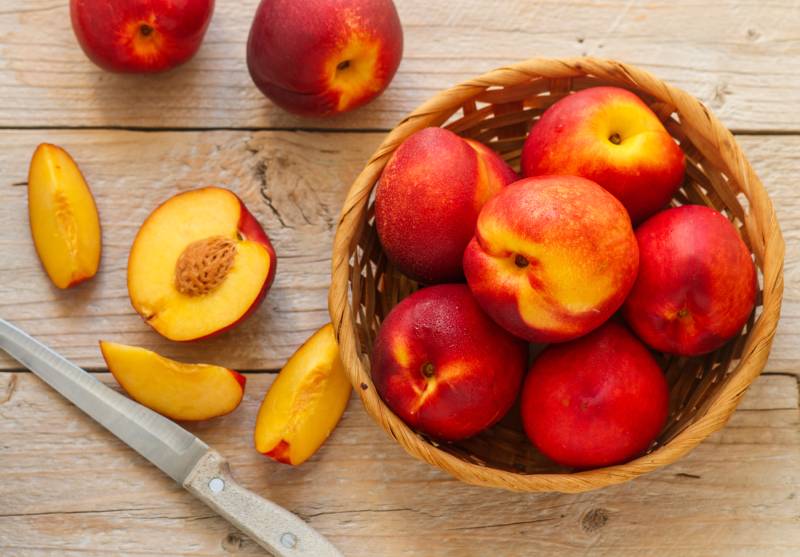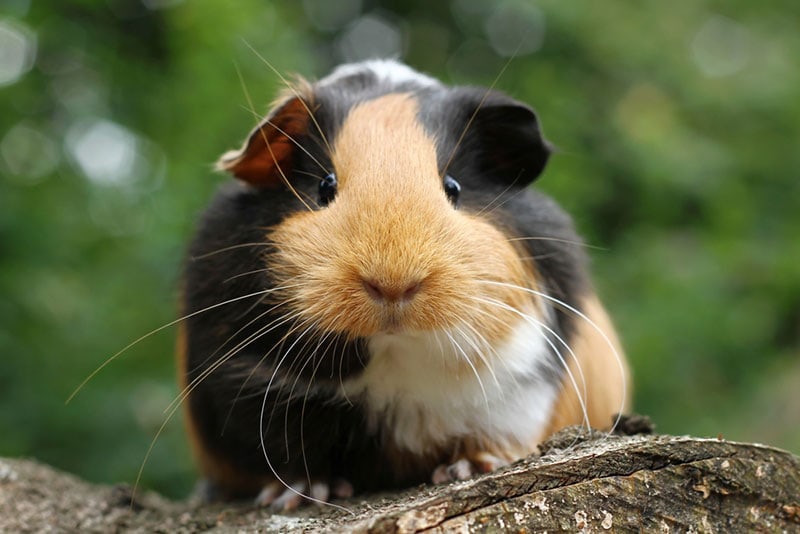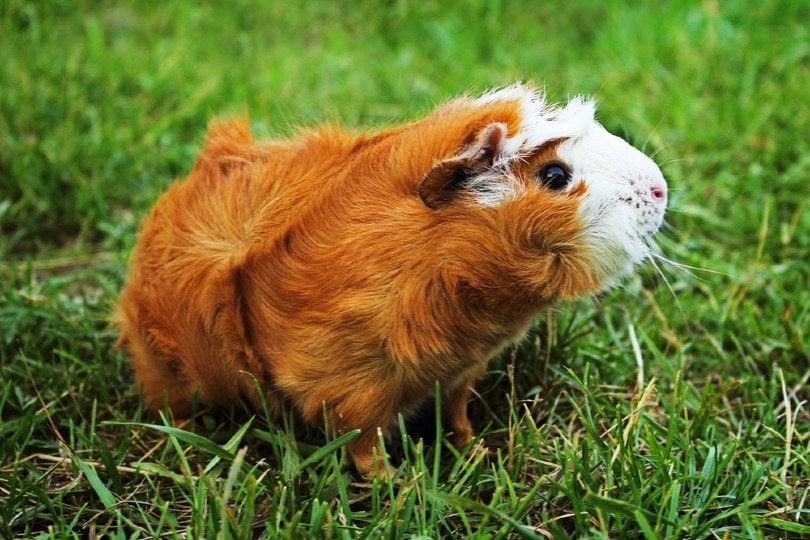Guinea Pig Exercise Guide: Vet-Approved Tips & Benefits
Updated on

While many people keep guinea pigs (or cavies) as pets, they’re not as common as cats and dogs, and some owners may be uncertain about how they should care for these pets. For example, how much space and exercise does a guinea pig need?
Guinea pigs are small animals but they are actually pretty active. They need plenty of space to exercise in as well as toys, hides, and tunnels to keep them happy and healthy and allow them to express normal behaviors.
In this article, we talk about guinea pig exercise needs, the benefits of exercise for guinea pigs, and how to ensure your cavy is getting all the exercise they need!
How Do Guinea Pigs Exercise?
Exercise is an integral part of every guinea pig’s life; it’s essential for keeping your cavy healthy and happy. By regularly exercising your guinea pig,1 you’ll improve their overall well-being, help them maintain their weight, and stimulate them mentally.
Exercise will allow you to socialize and bond with your guinea pig while promoting normal behavior. The behaviors that your cavy should be able to express freely include:
- Walking
- Running with friends
- Tunneling
- Stretching horizontally
- Playing
- Exploring
- Gnawing
- Jumping (popcorning)
- Chewing
- Foraging
- Hiding and retreating to a shelter
Regular exercise should also prevent abnormal behaviors, so you’ll need to ensure that your guinea pig has a safe space to exercise and play in order to live their best life.
In-Cage/Hutch Exercise

In a suitably large cage/hutch, guinea pigs will have plenty of room to exercise. Guinea pigs are inquisitive, and providing areas to explore within the cage, such as tunnels and deep bedding, will encourage more activity.
Free Range Exercise
Guinea pigs benefit from time outside their cage. This allows them to explore new environments safely. This can be supervised inside or outside in a safe, secure area free from hazards. This means making sure your guinea pig doesn’t have access to things like electric cables, poisonous plants and is safe from predators like foxes or cats. Guinea pigs are naturally most active in the mornings and evenings, so these are often the best times for free range fun.
Tips for Helping Your Guinea Pig Exercise
If you’re a new guinea pig owner, you may struggle to find a way to properly exercise your pet while ensuring safety. Here are a few of the best tips to help your cavy exercise:
- Provide plenty of foraging opportunities with hidden treats to encourage your pet to play and explore their surroundings.
- Include hiding spots such as tunnels, pipes or deep areas of hay where your guinea pig can retreat to. Guinea pigs are inquisitive but nervous and instinctively have one eye on a safe bolt hole when exploring.
- Make the exercise area interesting; set up different levels, use boxes, or create an exciting forest.
- Ensure that the exercise area is hazard free and that there’s nothing that could hurt your guinea pig.
- Provide clean water nearby, and prepare food to treat your cavy after their activity.
- Provide guinea pig-friendly toys, such as small balls, stuffed toys, or cardboard boxes.
- Change the environment of the exercise space every once in a while to make it more interesting.
- Supervise outside exercise to prevent your cavy from getting hurt by wildlife or other pets such as cats.
- Never allow your guinea pig to exercise in an area that has been treated with chemicals, such as pesticides or fungicides.
- Stay away from exercise wheels and balls, these are not suitable for guinea pigs.
The Benefits of Exercise for Guinea Pigs and Their Health
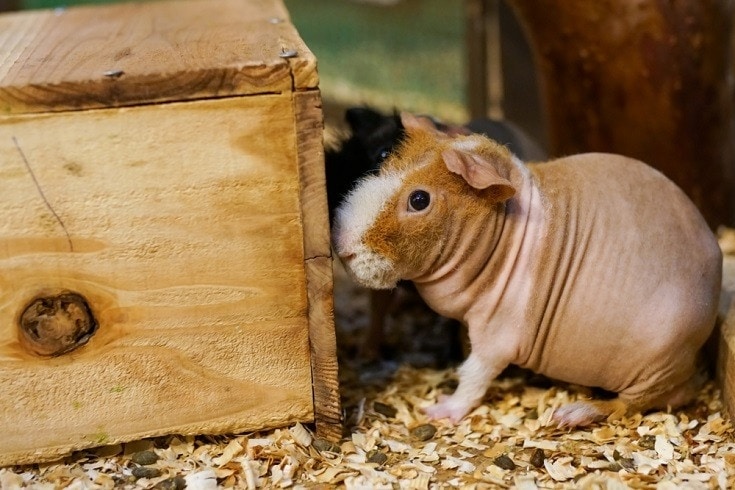
Exercise positively affects guinea pigs’ bodies and brains, which is why they need this daily activity to properly function and develop. While there are numerous benefits of exercise for guinea pigs and their health, the most important ones are that:
- It keeps them in good shape — Without enough exercise, your guinea pig could easily become overweight and experience an array of health issues such as joint problems.
- It relieves boredom and promotes normal behaviors — Exercise works off excess energy and helps relieve stress. Cavies that get regular exercise engage in normal behaviors, such as exploring, foraging and running with a friend making them happier and healthier.
- It provides mental stimulation — In the wild Guinea Pigs would be foraging and evading predators. Keeping them mentally stimulated with environmental enrichment and exercise is important for our pet guinea pigs.
The 5 Ways to Exercise a Guinea Pig
1. Provide a Large Cage
Guinea pigs need a large cage where they can freely move and explore their environment. It will provide more opportunities for your cavy to exercise, as they can freely roam. A large free space will also encourage movement and help your cavy stay in good shape without your help.
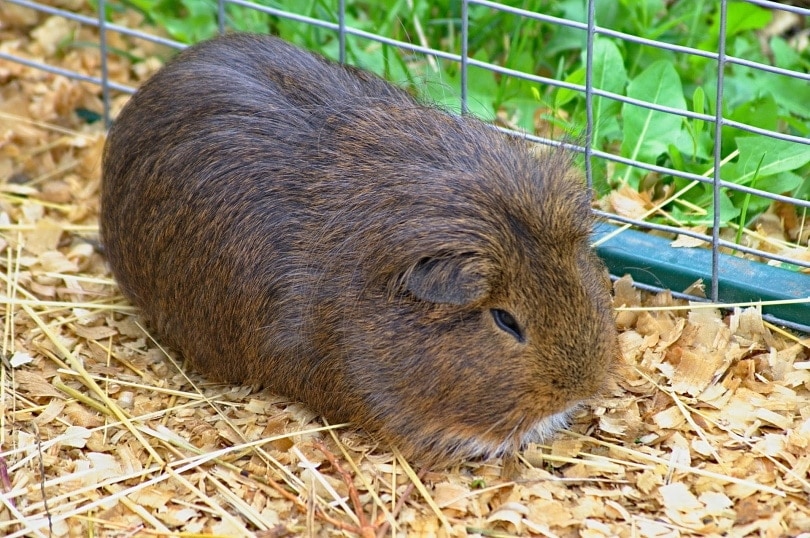
2. Provide Plenty of Free Run Time
An excellent way to exercise your guinea pig is to provide them with plenty of free run time. To do that, you’ll need to create a safe outdoor area where your guinea pig can roam and explore nature. The area should be big but not too large, as too much free space may disorient your cavy.
If you allow your guinea pig to have free run time, you’ll always need to be around to prevent other wildlife from hurting your cavy.
3. Create a Play Tunnel
Most cavies consider play tunnels exciting, and they love to explore them by going from one end of the tunnel to the other. After your cavy is done playing, you can store the play tunnel and use it again for an exercise session in the future.
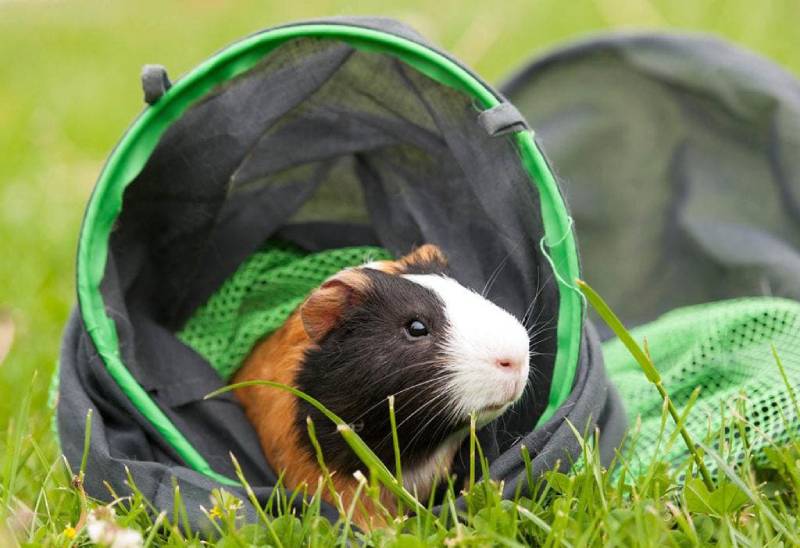
4. Build an Obstacle Course
Since guinea pigs are born explorers, you can help them exercise by creating an obstacle course in their cage or outside. You can use various household items, boxes, or anything else that you find suitable to DIY the obstacle course and create an interesting space for your cavy. You can also make a maze, add tunnels, and create hidden spots with food that your guinea pig needs to find.
The opportunities for DIY guinea pig obstacles are endless, and all you need is spare time and a bit of creativity to help your cavy stay in good shape.
5. Get Another Guinea Pig to Join Your Family
Guinea pigs are social animals and are happier and more active when kept with other guinea pigs. In the wild, they live in groups and your guinea pig will get more exercise from running with a friend. Ideally, guinea pigs should live in groups of at least two, making sure they are neutered or that both animals are the same sex to avoid any unintended litters.
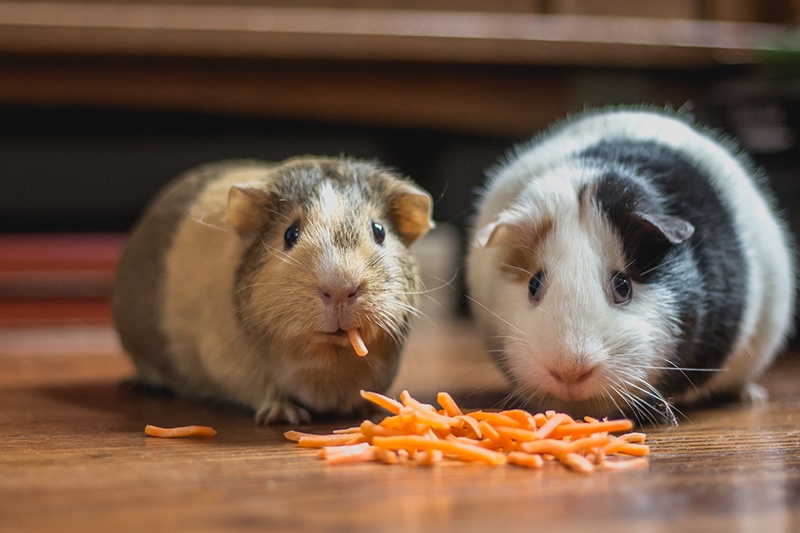
Final Thoughts
Guinea pigs make wonderful pets. They may be small but they do require plenty of space to exercise and time outside of their cage. By also providing environmental enrichment, as we have discussed in this article, you can keep your cavy happy and healthy.
Featured Image Credit: Miroslav Hlavko, Shutterstock


